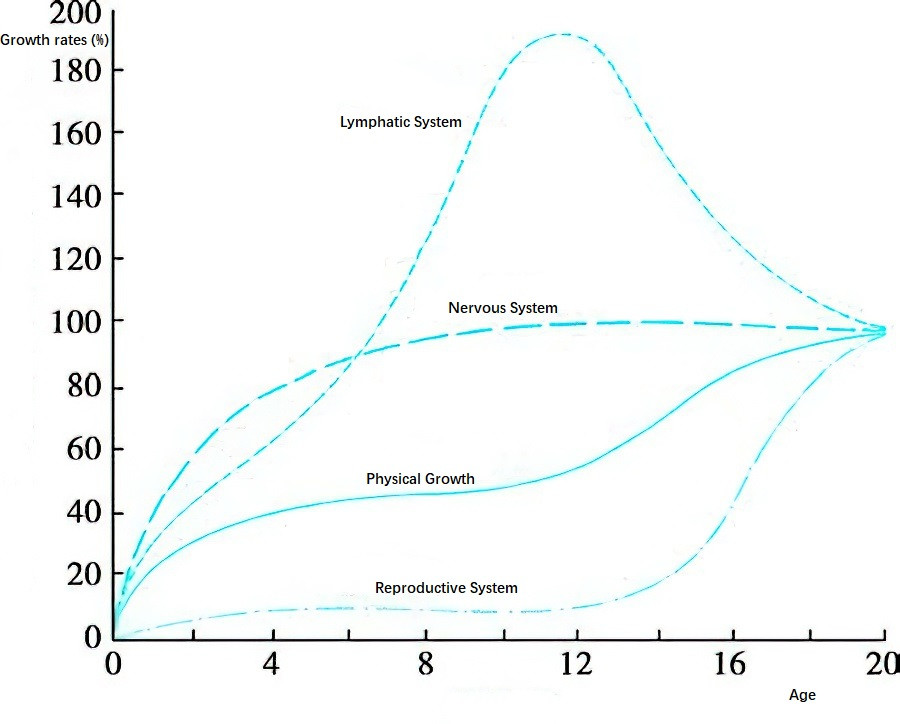Growth and development, whether in terms of overall rate or the sequential development of various organs and systems, follow certain established patterns. Understanding these general patterns helps pediatricians evaluate and guide children's growth and development appropriately.
Continuity and Stage-Specific Characteristics of Growth and Development
The process of growth and development spans the entire childhood period, but growth rates vary across different age stages. For example, the rate of weight and height increase is fastest during the first year of life, particularly in the first three months. As such, the first year represents the first postnatal growth peak. After the second year, the growth rate gradually slows down until it accelerates again during adolescence, marking the onset of the second growth peak.
Asynchronous Development of Organs and Systems
The growth rates of organs and systems in the human body are not entirely synchronized but follow certain patterns. For instance, the nervous system develops relatively early, with the first 1,000 days of life (starting from fertilization) being the period of the most rapid brain growth. The lymphatic system grows rapidly during childhood, reaching its peak before adolescence, and then gradually declines after that. In contrast, the reproductive system develops relatively late. Other systems, such as the heart, liver, kidneys, and muscles, generally grow in parallel with overall physical growth. The differing rates of system development are related to the physiological functions required at each stage of childhood.

Figure 1 Growth rates of organs and systems are not completely synchronized
General Rules of Growth and Development
The growth and development of children follow specific principles, including progression from top to bottom, from proximal to distal, from gross to refined, from simple to complex, and from lower to higher functions. For example, the motor development sequence after birth is as follows: lifting the head, then the chest, followed by sitting, standing, and walking (top to bottom); movements progress from arms to hands and from legs to feet (proximal to distal); the ability evolves from grasping with the entire hand to picking up with fingers (gross to refined); and drawing skills develop from drawing straight lines to circles and shapes (simple to complex). Similarly, the cognitive progression involves initially seeing, hearing, and sensing things, which then gradually develop into memory, thinking, analysis, and judgment abilities (lower to higher levels).
Individual Differences in Growth and Development
While children's growth and development follow general patterns, there are substantial individual differences influenced by genetic and environmental factors. Each child's "trajectory" of growth is unique. Consequently, there is a normal range of variation in growth and development levels. These "normal values" are not absolute. Individual influences must be taken into account when evaluating a child's growth and development to make accurate judgments.